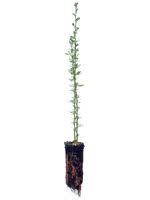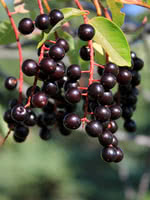Mon-Fri 9am - 5pm Mountain time
Western Chokecherry vs Pygmy Caragana
Caragana pygmaea
Prunus virginiana var. demissa
CUSTOM GROW
Pygmy Caragana is a shrub that is related to Common Caragana and has a compact size that is suitable for yards with limited space. Its size is perfect for landscaping and decorative hedges, and requires little maintenance. This nitrogen fixer has fine-textured foliage and small yellow flowers. Much like Common Caragana, it is hardy and drought tolerant.
Popular as a low maintenance commercial landscaping shrub and for hedging. This species does have tiny spines that might poke you a bit. It has a nice appealing texture when mature.
Western Chokecherry is a shrub or small tree commonly used for farmstead and field windbreaks.
It produces white flowers in the spring and edible dark purple fruit that matures between September and October. Its cherries are great for making for making jams, jellies or wine, but are not very palatable for raw eating.
Pygmy Caragana Quick Facts
Western Chokecherry Quick Facts
Toxicity: toxic to horses, cattle, etc.)

